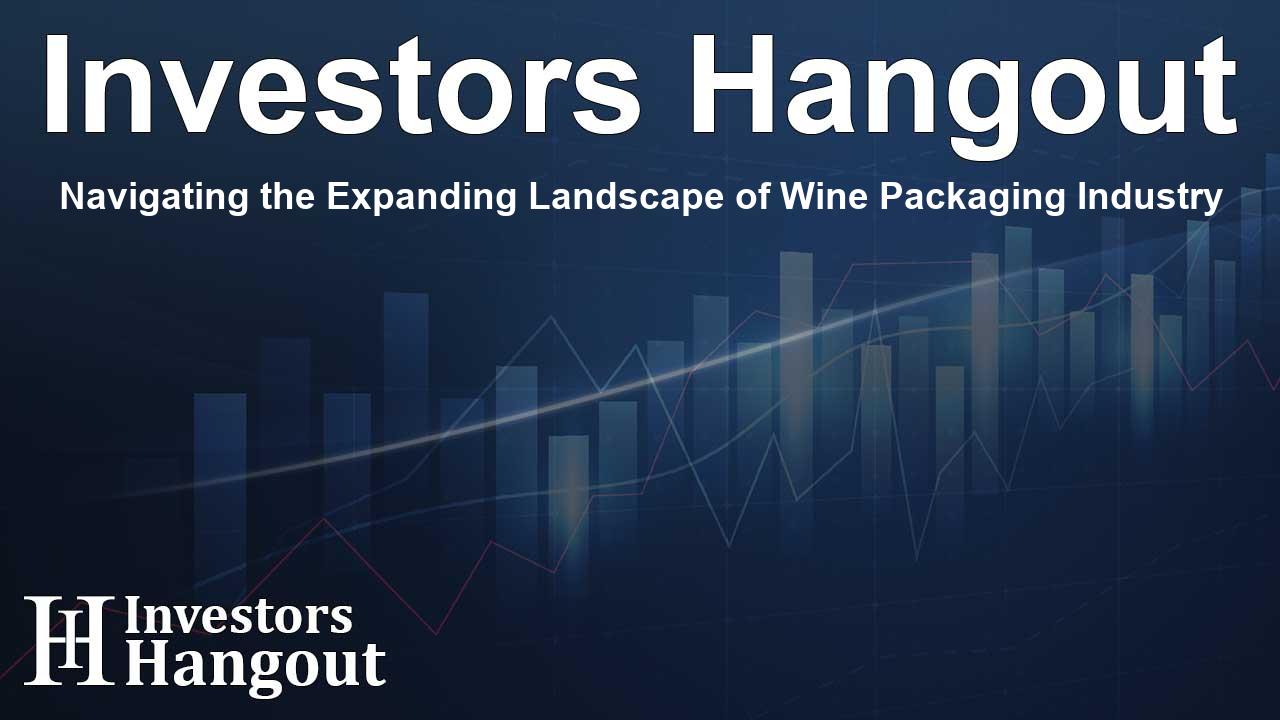Navigating the Expanding Landscape of Wine Packaging Industry

Understanding the Growth of the Wine Packaging Market
The global wine packaging market has been witnessing a remarkable transformation, estimated to grow significantly in the coming years. This notable shift is primarily driven by factors such as the increasing demand for premium wine and sustainable packaging solutions. Wine producers, packaging manufacturers, and industry leaders must adapt to these evolving trends to remain competitive and relevant in the market.
Market Insights and Projections
According to recent forecasts, the wine packaging market is anticipated to reach USD 12.01 billion by 2031, with a compound annual growth rate (CAGR) of 4.1% from the upcoming years. This expected growth reflects a robust interest in premium and eco-friendly packaging, highlighting a shift in consumer preferences towards higher-quality products.
Drivers of Market Growth
One of the key drivers fueling this market expansion is the rising demand for premium and luxury wines. Consumers are increasingly seeking high-quality options that enhance their overall experience. As a result, producers are investing in sophisticated packaging that not only protects the product but also serves as a powerful marketing tool. Unique designs, such as personalized labels and distinct bottle shapes, are becoming essential in engaging the luxury wine buyer.
Additionally, sustainability continues to gain traction as a significant market driver. Eco-conscious consumers are actively looking for sustainable packaging options like recyclable glass and biodegradable materials. This shift toward environmentally friendly solutions aligns with global regulations aimed at reducing packaging waste. Wine producers are therefore compelled to innovate and invest in sustainable technologies to meet consumer expectations and regulatory requirements.
Innovations Enhancing Market Appeal
As the wine packaging market evolves, technological innovations are making waves in enhancing both functionality and appeal. Smart packaging, such as labels equipped with QR codes for consumer interaction and traceability, has gained popularity. Such advancements allow consumers to engage with the product, leading to a richer experience. Innovations in bottle design, new closure mechanisms, and tamper-evident technologies cater to consumers’ evolving preferences.
Challenges Impacting Market Expansion
Despite the promising growth, the wine packaging market is not without its challenges. Increased environmental concerns surrounding traditional packaging materials pose significant hurdles. Many wine producers face scrutiny from both consumers and regulatory bodies for their environmental impact. Transitioning to eco-friendly alternatives can be resource-intensive and may involve higher production costs.
Raw Material Price Volatility
Moreover, the market is heavily influenced by the volatile prices of raw materials such as glass and aluminum. Fluctuations caused by global supply chain issues can significantly impact production costs, forcing producers to adapt quickly to maintain pricing and profitability. These unpredictable factors add layers of complexity to the already competitive landscape.
Consumer Preferences for Tradition
Another barrier to innovation remains rooted in consumer preferences. Despite the benefits of modern packaging alternatives, many wine enthusiasts still favor traditional packaging like glass bottles, associating them with quality and luxury. This deep-rooted loyalty can hinder the broader adoption of more sustainable packaging solutions, such as aluminum cans or tetra packs.
Conclusion & Future Directions
The global wine packaging market is on a path toward growth fueled by the demand for premium products and sustainable practices. The shift toward eco-friendly packaging aligns with increasing consumer awareness and regulations aimed at reducing environmental impact. For wine businesses, embracing innovative packaging solutions and focusing on sustainability is not just an option but a necessity in today’s marketplace.
Frequently Asked Questions
What is driving the growth of the wine packaging market?
The growth is driven by rising demand for premium wines and sustainable packaging options, aligning with consumer preferences.
How significant is the projected market growth?
The wine packaging market is projected to reach USD 12.01 billion by 2031, reflecting a CAGR of 4.1%.
What challenges does the wine packaging market face?
Key challenges include environmental concerns about traditional packaging materials, raw material price volatility, and consumer preferences for traditional packaging.
How are technological advancements influencing wine packaging?
Technological innovations, such as smart packaging and new closure mechanisms, enhance functionality and engage consumers.
What regions are witnessing growth in wine packaging?
Significant growth can be seen globally, particularly in regions with strong wine production and consumption like North America and Europe.
About The Author
Contact Thomas Cooper privately here. Or send an email with ATTN: Thomas Cooper as the subject to contact@investorshangout.com.
About Investors Hangout
Investors Hangout is a leading online stock forum for financial discussion and learning, offering a wide range of free tools and resources. It draws in traders of all levels, who exchange market knowledge, investigate trading tactics, and keep an eye on industry developments in real time. Featuring financial articles, stock message boards, quotes, charts, company profiles, and live news updates. Through cooperative learning and a wealth of informational resources, it helps users from novices creating their first portfolios to experts honing their techniques. Join Investors Hangout today: https://investorshangout.com/
The content of this article is based on factual, publicly available information and does not represent legal, financial, or investment advice. Investors Hangout does not offer financial advice, and the author is not a licensed financial advisor. Consult a qualified advisor before making any financial or investment decisions based on this article. This article should not be considered advice to purchase, sell, or hold any securities or other investments. If any of the material provided here is inaccurate, please contact us for corrections.
